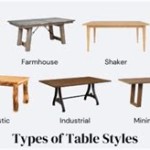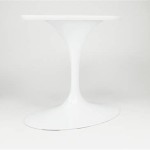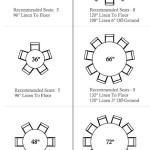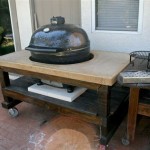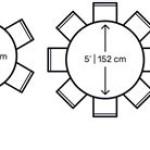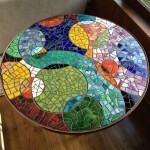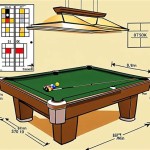How to Make a Fold-Up Wall Table
A fold-up wall table offers a versatile solution for small spaces, providing a surface for work or dining and folding away neatly when not in use. This guide provides a comprehensive walkthrough for constructing a sturdy and functional fold-up wall table.
Materials Required:
The following materials are necessary for this project:
- Plywood or MDF board (thickness depending on desired table size and weight capacity)
- 2x4 lumber for wall cleats and table frame
- Folding table brackets (heavy-duty recommended)
- Wood screws (various lengths)
- Wall anchors (appropriate for the wall type)
- Wood glue
- Sandpaper
- Wood finish (paint, stain, or sealant)
Tools Required:
The following tools are needed for this project:
- Measuring tape
- Pencil
- Circular saw or jigsaw
- Drill with appropriate drill bits
- Screwdriver
- Level
- Stud finder
- Safety glasses
- Clamps
- Sanding block
- Paintbrushes or rags (if applying finish)
Step-by-Step Instructions:
1. Measurements and Cutting: Begin by determining the desired dimensions of the table. Carefully measure and mark the plywood or MDF board for cutting. Use a circular saw or jigsaw to cut the board to the marked dimensions. Cut the 2x4 lumber to the appropriate lengths for the wall cleats and the table frame. The length of the wall cleats should be slightly shorter than the width of the tabletop, and the frame pieces should match the table's dimensions.
2. Assembling the Table Frame: Assemble the 2x4 lumber pieces to create a rectangular frame that will support the tabletop. Use wood glue and screws to secure the frame pieces together. Ensure the corners are square and the frame is sturdy.
3. Attaching the Tabletop to the Frame: Apply wood glue to the top edges of the frame. Carefully position the tabletop onto the frame, ensuring proper alignment. Secure the tabletop to the frame using wood screws from underneath, spaced evenly. Countersink the screws to create a smooth surface.
4. Installing Wall Cleats: Locate wall studs using a stud finder. Mark the desired height for the table on the wall. Position the wall cleats horizontally on the wall, aligning them with the studs. Use a level to ensure the cleats are perfectly horizontal. Secure the cleats to the wall studs using screws and wall anchors (if necessary). The length of the wall cleats should be such that the table, when folded, does not interfere with any baseboards or other wall fixtures.
5. Attaching Folding Brackets: Following the manufacturer's instructions, attach one side of the folding brackets to the underside of the table frame. Position the other side of the brackets on the wall cleats. Ensure that the brackets are level and aligned correctly to provide proper support when the table is unfolded.
6. Testing the Mechanism: Carefully unfold the table to ensure the brackets operate smoothly and lock securely in the open position. Test the stability of the table by applying moderate pressure. Make any necessary adjustments to the brackets or cleats to ensure the table is level and secure.
7. Finishing: Sand all surfaces of the table and frame smooth, paying attention to edges and corners. Apply the desired wood finish (paint, stain, or sealant) following the manufacturer's instructions. Allow the finish to dry completely before using the table.
Additional Considerations:
Weight Capacity: The weight capacity of the table will depend on the materials used and the construction methods. Use heavy-duty brackets and thicker plywood/MDF for tables intended to hold heavier items. Ensure the wall cleats are securely attached to studs for maximum support.
Safety: Always prioritize safety when working with power tools. Wear appropriate safety glasses and follow all manufacturer instructions. Ensure the table is securely attached to the wall and that the folding mechanism is in good working order to prevent accidents.
Customization: This design can be adapted to suit specific needs and preferences. Consider adding features such as a locking mechanism for added safety, or a decorative finish to match existing décor. Custom cutting the table top to accommodate specific dimensions or shapes can further enhance the functionality and aesthetic appeal of the finished product.
Maintenance: Periodically check the tightness of screws and the functionality of the folding brackets. Clean the table surface regularly with appropriate cleaning products for the chosen finish.

How To Make Folding Table At Home Building A Wall Mounted Desk Diy

Diy Fold Down Wall Table 6 Steps With S Instructables

Diy Folding Wall Mounted Workbench

Building A Gorgeous Fold Up Table Wall Mounted Drop Down Desk Space Saving

Save Space With This Murphy Desk Complete Tutorial

How To Make A Wall Mount Folding Table Space Saving A2z Construction Details

Easy Diy Wall Mounted Folding Table Workbench From A Door Remodelaholic

Easy Diy Wall Mounted Folding Table Workbench From A Door Remodelaholic

Diy Fold Away Wall Table Love Your Abode

How To Build A Folding Desk

